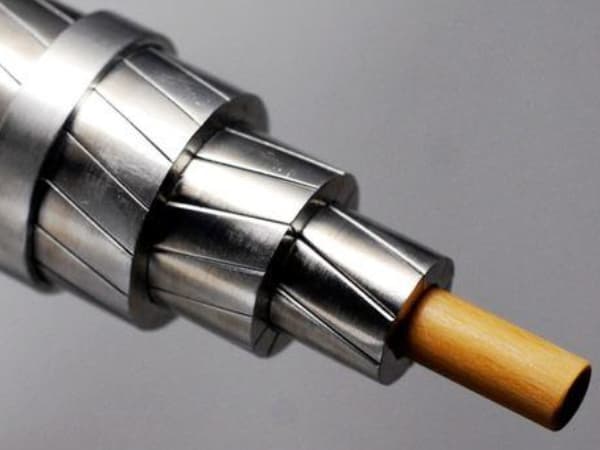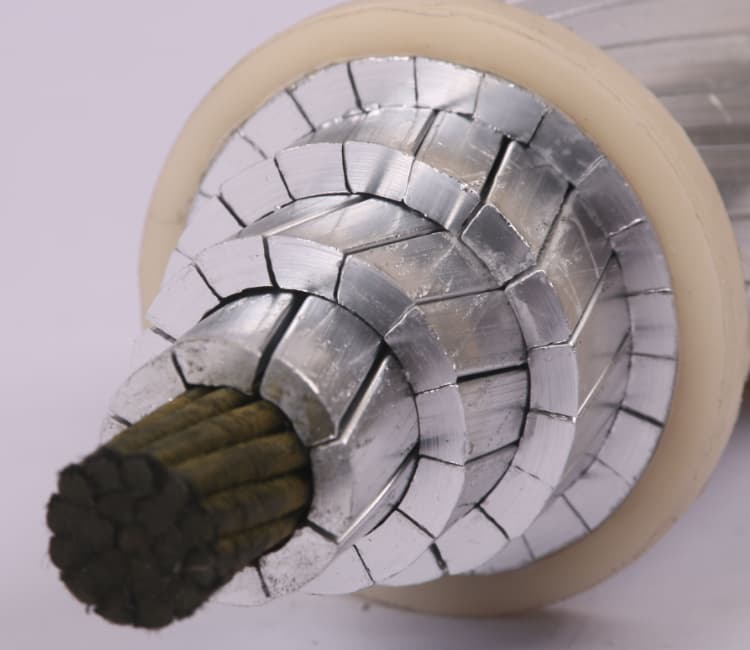ACCC Conductor
What is ACCC Conductor?
ACCC Conductor, Aluminum Conductor Composite Core, features a central core made of lightweight Carbon-Glass fiber composite, around which one or more layers of trapezoidally shaped hard drawn and annealed 1350-0 aluminum wires are concentrically stranded. Compared to traditional conductors, the ACCC Conductor utilizes a carbon fiber core that is significantly stronger (25%) and lighter (60%) than steel cores commonly used.
This innovative design allows the ACCC Conductors to increase its aluminum content by over 28% without altering its overall diameter or weight. Its robust construction enables it to operate efficiently at elevated temperatures while maintaining excellent sag characteristics across its operating range. When there’s a need to enhance transmission capacity by reconductoring existing lines, the ACCC Conductor is the preferred choice.
Furthermore, the ACCC Conductor offers very low line losses and exceptional self-damping properties. Its high strength-to-weight ratio allows for longer spans, which reduces the overall cost of constructing new transmission lines. for example product, ACCC drake Conductor
ACCC Conductor Standard
ASTM B987 / B987M – 20 “Standard Specification for Carbon Fiber Thermoset Polymer Matrix Composite Core for use in Overhead Electrical Conductors.”
1350-O tempered aluminum wires as per ASTM B 609 or EN 50540
Hybrid carbon and glass fiber core (Composite Core) according to ASTM B987
ACCC Conductors are required to exhibit lay lengths (ratios) that conform to ASTM B 857 or EN 50540.
Conductor ACCC Advantages
The composite-core ACCC conductor enhances the capacity of electric power transmission lines by substituting the steel core found in traditional ACSR cables with a high-strength composite of carbon and glass fibers. This innovation allows the conductor to carry approximately twice as much current as a conventional ACSR cable of similar dimensions and weight. This capability makes ACCC conductors particularly advantageous for upgrading existing transmission lines without the need to replace towers and insulators.
Beyond cost and material savings, upgrading to ACCC can be undertaken as part of routine maintenance, bypassing the lengthy permitting process typically required for new construction.
Key advantages of the ACCC conductors include:
Weight Efficiency: By utilizing trapezoidal aluminum strands and a lighter composite core, ACCC conductors maximize the amount of aluminum within the same diameter, enhancing conductivity.
Temperature Performance: With a significantly lower coefficient of thermal expansion compared to ACSR, ACCC conductors can operate at much higher temperatures without excessive sagging between poles. This property allows for continuous operation at temperatures up to 180°C, far exceeding the limits of traditional ACSR conductors.
In practical terms, these enhancements translate to a conductor that not only carries more current but also exhibits reduced line losses due to lower electrical resistance. This capability contributes to grid reliability by providing excess capacity to prevent cascading failures during peak demand or unforeseen stress events. Thus, even though operating at maximum temperatures may incur higher losses, the overall efficiency and resilience of the electric grid are greatly enhanced.


